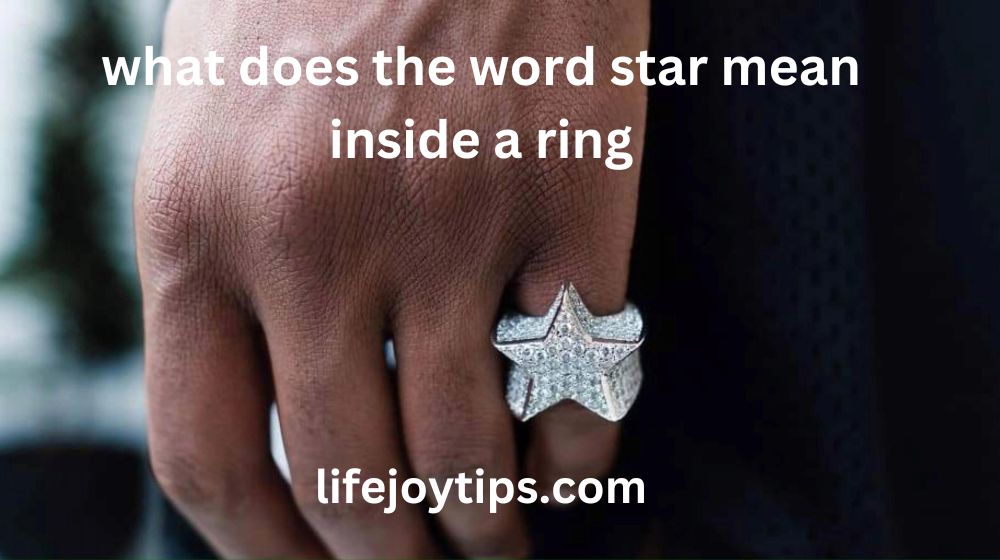Star Inside a Ring: A Captivating Celestial Mystery
The universe is full of awe-inspiring phenomena that often leave us staring up at the night sky in wonder. One of these incredible spectacles is the appearance of a star inside a ring, a sight that captivates both amateur stargazers and seasoned astronomers alike. The beauty of this celestial phenomenon isn’t just in its visual appeal but also in the rich scientific mystery behind it. Imagine gazing through a telescope and seeing a bright star framed by a delicate, glowing ring. This cosmic arrangement might seem like something out of a storybook, but it is very much real, occurring in the vast expanse of space that surrounds us.
If you’ve ever looked at the night sky and wondered what it all means, this article will guide you through the fascinating world of stars inside rings. Whether you’re a budding space enthusiast or just curious, we’ll break down the science behind these celestial wonders in a way that’s easy to understand and exciting to learn about.
What Is a Star Inside a Ring?
At its core, a star inside a ring is an astronomical phenomenon where a star is surrounded by a circular or oval ring of gas, dust, or light. These rings can form in different ways, but the sight of a glowing star framed by a luminous ring is a powerful image that sticks with anyone who has the chance to witness it. The effect can be created through several cosmic events, and the ring often symbolizes something significant happening around the star.
But how does such a ring form? And why is it that we can sometimes see this structure from Earth? To truly understand, let’s dive deeper into the science and uncover the mystery.
Different Types of Star and Ring Systems
When we talk about a star inside a ring, we’re actually referring to a variety of different astronomical events that can create this visual effect. Here are a few common types:
Stellar Nebulae
One of the most well-known ways a star can appear to be inside a ring is through a stellar nebula. A nebula is a cloud of gas and dust in space, often surrounding a newly formed star. As the star shines, its light illuminates the surrounding nebula, creating the appearance of a glowing ring around the star.
Nebulae are often referred to as the “birthplaces of stars,” because it’s within these clouds that stars are formed. Over time, the intense heat and pressure inside the nebula cause parts of it to collapse inward, eventually igniting a new star. Once the star is born, its light shines through the remaining dust and gas, creating that beautiful ring-like appearance we see from Earth.
Planetary Nebulae
A planetary nebula forms later in a star’s life, after it has burned through most of its fuel. When a star like our Sun reaches the end of its life, it expands into a red giant and then sheds its outer layers. These layers of gas and dust form a glowing shell around the dying star, which often looks like a ring when viewed from a distance. Planetary nebulae are stunningly beautiful, with the central star often appearing small and faint within the bright, colorful ring of gases.
Supernova Remnants
Sometimes, the ring we see around a star is the result of a much more dramatic event—a supernova. When a massive star reaches the end of its life, it can explode in a supernova, sending shockwaves through space. The material that is blasted outward during the explosion forms a ring of gas and debris around the star’s remains. These rings can glow brightly for thousands of years after the supernova has occurred.
Supernova remnants, such as the famous Crab Nebula, often feature a bright central star surrounded by intricate rings of material, each telling the story of a powerful stellar explosion that took place long ago.
Black Hole Accretion Disks
In some cases, a ring of light around a star might actually be an accretion disk, a structure that forms around a black hole or neutron star. As matter falls toward the black hole, it spirals inward and heats up, forming a glowing ring of material around the event horizon. While the black hole itself can’t be seen, the surrounding ring of light and material can create the appearance of a “star” inside a ring, even though what we’re actually seeing is the light from the disk around the black hole.
How Are These Rings Formed?
The formation of a ring around a star can occur in several ways, depending on the specific circumstances of the star’s life cycle and the environment around it.
Gas and Dust Ejection
Many stars eject gas and dust as they evolve. In the case of planetary nebulae, for example, the star’s outer layers are thrown off into space, creating a spherical shell of material. From Earth, this shell often appears as a ring, because we can only see the material that is glowing in front of and behind the star. This optical illusion makes the structure appear two-dimensional, even though it is actually three-dimensional.
Gravity and Radiation
Stars also interact with the material around them through gravity and radiation. Gravity can pull gas and dust toward the star, while radiation can push material away. These forces can create rings of matter around the star, which can either fall back toward the star over time or drift away into space.
Stellar Winds
Some stars produce strong winds of charged particles that can blow material outward, forming a stellar wind bubble. When the star is young and still forming, these winds can shape the surrounding gas into a ring. Later in the star’s life, as it burns through its fuel and begins to expand, these winds can sweep up more material, reinforcing the ring-like shape.
Famous Examples of Stars Inside Rings
Several well-known astronomical objects fit the description of a star inside a ring. These objects are popular targets for observation and study by both amateur and professional astronomers.
The Ring Nebula
Perhaps the most famous example of a star inside a ring is the Ring Nebula (M57) in the constellation Lyra. This planetary nebula is easily visible through small telescopes and appears as a bright ring of gas surrounding a faint central star. The Ring Nebula is a classic example of a star that has shed its outer layers at the end of its life, leaving behind a glowing shell of material.
The Cat’s Eye Nebula
Another striking example is the Cat’s Eye Nebula (NGC 6543), which is a planetary nebula located about 3,000 light-years from Earth. The nebula features a bright central star surrounded by a series of concentric rings, creating a stunning pattern of light and color. The intricate structure of the Cat’s Eye Nebula is a result of the star’s complex life cycle, as it has shed material in multiple phases.
The Southern Ring Nebula
Visible from the Southern Hemisphere, the Southern Ring Nebula (NGC 3132) is another planetary nebula with a bright central star and a beautiful ring of glowing gas. Like the Ring Nebula and the Cat’s Eye Nebula, the Southern Ring Nebula was formed when the central star expelled its outer layers of material, creating the glowing ring we see today.
SN 1987A
Supernova SN 1987A is a famous example of a star surrounded by a ring that formed after the star exploded. The supernova occurred in the Large Magellanic Cloud, a nearby galaxy, and the event was visible from Earth in 1987. The explosion left behind a ring of material around the central star, which is still visible today.
Why Do These Phenomena Matter?
While the star inside a ring phenomenon is beautiful to observe, it also holds great scientific significance. Studying these structures can provide valuable insights into the life cycles of stars, the physics of gas and dust in space, and the processes that shape the universe.
Stellar Evolution
Understanding how and why stars shed their outer layers or explode in supernovae is key to understanding the broader process of stellar evolution. By studying planetary nebulae, supernova remnants, and other ring-like structures, astronomers can learn more about how stars live, age, and eventually die. These studies also help scientists refine their models of how stars produce and distribute elements like carbon, oxygen, and iron, which are essential for the formation of planets and life.
Galactic Recycling
The material ejected from stars during events like supernovae or the formation of planetary nebulae doesn’t just drift away into space—it eventually becomes part of the interstellar medium, the vast clouds of gas and dust that fill galaxies. This material is recycled over time, eventually forming new stars, planets, and other cosmic objects. In this way, the rings around stars are part of a much larger cycle of galactic recycling that shapes the universe as we know it.
How to Observe a Star Inside a Ring
If you’re interested in seeing a star inside a ring for yourself, you’ll need a telescope and some patience. Many of the objects mentioned in this article, such as the Ring Nebula and the Cat’s Eye Nebula, are visible through small telescopes. Observing these objects requires a dark sky and good viewing conditions, but the reward is well worth the effort.
Astronomical events such as supernovae are rarer and harder to predict, but with the right tools, you might one day witness a supernova remnant with a glowing ring of material around it.
Conclusion: A Window into the Cosmos
The star inside a ring phenomenon is one of the universe’s most breathtaking displays. It not only provides a glimpse into the life and death of stars but also tells a story about the ongoing processes that shape the cosmos. Whether formed by a stellar nebula, planetary nebula, or the remnants of a supernova, these rings are a testament to the incredible forces at work in space.
Also Read: Black Ring Meaning: Unlock the Hidden Power
FAQs
What is a star inside a ring?
A star inside a ring is an astronomical phenomenon where a star is surrounded by a circular or oval structure of gas, dust, or light.
How do stars create rings?
Stars can create rings by ejecting material, such as gas and dust, or through events like supernovae, which blast debris into space.
What are planetary nebulae?
Planetary nebulae are clouds of gas and dust that form around dying stars, often creating a glowing ring-like structure around the central star.
Can you see a star inside a ring with a telescope?
Yes, objects like the Ring Nebula and the Cat’s Eye Nebula are visible through small telescopes under good viewing conditions.
What causes a supernova remnant to look like a ring?
When a star explodes in a supernova, the material ejected during the explosion can form a ring around the remains of the star.
Why is the star inside a ring phenomenon important for scientists?
This phenomenon helps scientists study stellar evolution, galactic recycling, and the processes that shape the universe.








